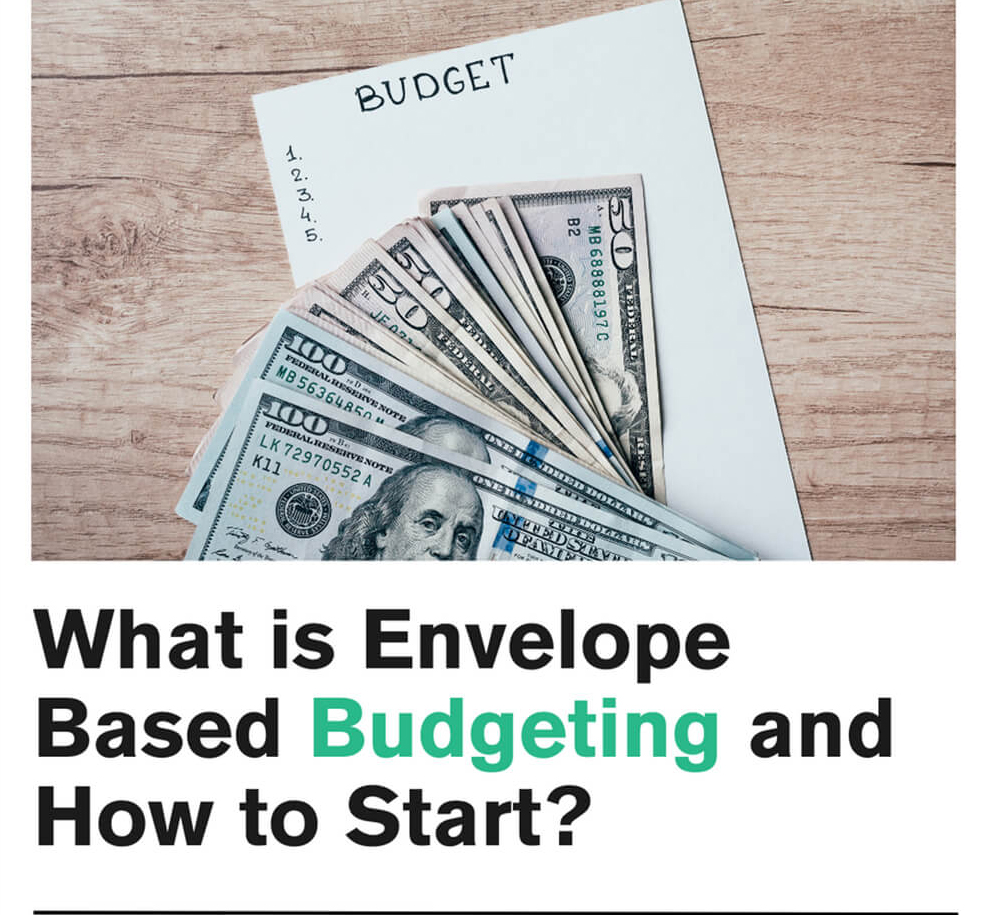
What is Envelope Based Budgeting and How to Start?
Are money struggles constantly stressing you out? Does income vanish before your next paycheck arrives?
Envelope-based budgeting illuminates spending leaks so you master money instead of it mastering you. Embrace this clever technique and finally achieve financial freedom!
What Is Envelope-Based Budgeting?
Envelope-based budgeting works by dividing your planned spending money into virtual “envelopes,” each representing necessary or discretionary spending categories like rent, utilities, transportation, entertainment, etc.
You designate specific dollar amounts to go into each envelope after receiving a paycheck. Then, when expenses arise in a certain category during the month, you figuratively take money out of that category’s envelope to cover the transaction. Once any envelope hits zero, no more spending is allowed from that category until the next pay cycle replenishes it.
This budgeting methodology traces back decades to when families used physical cash envelopes to allocate funds in tangible form for routine household expenses. Actual paper envelopes labeled with categories would receive cash divided up based on planned monthly spending. Handing certain envelopes directly to merchants when paying created an easy, visible signal around the remaining balances for the month.
Nowadays, digital personal finance apps and tools use the envelope budgeting metaphor without requiring messy piles of envelopes stuffed with money. However, the basic principle remains equally effective for instilling smart spending habits.
Key Takeaway: Envelope budgeting divides variable expenses into categories with assigned monthly limits. Virtual “envelopes” help curb overspending by transforming expenses into visible compartments.
Why Envelope Budgeting Works
Always scrambling to pay bills every month? Despite your best intentions, can’t seem to budget effectively or save money? Envelope budgeting succeeds because it feels less restrictive than typical budget methods. The tangible compartments create accountability with flexibility baked in.
Watching your virtual rent or grocery envelopes empty out month to month boosts self-awareness around spending. When you know handing over $50 cash to the mechanic empties your auto maintenance envelope for the month, you proceed more consciously. Apps that link envelopes directly to accounts provide effortless tracking.
Mentally setting aside chunks of income into labeled envelopes after getting paid also provides positive reinforcement toward goals. Breaking bigger financial goals like saving for a house down into smaller visible envelopes makes them feel less intimidating and more achievable.
Because envelope budgeting allows flexibility within its structured containers, you stay motivated long-term. As long as your allocated envelopes hit zero by the end of each month, you succeeded in living within your means!
Key Takeaway: Envelope budgeting raises spending awareness through visible compartments. Achieves flexibility via a structured system. Provides positive gamification towards goals. Promotes long-term motivation.
Potential Drawbacks to Consider
While envelope budgeting offers clever ways to empower smart spending habits, the highly regimented system poses some limitations to consider before adopting it. Understanding these potential drawbacks helps determine whether envelope budgeting fits your lifestyle and values.
- The initial learning curve feels steep. Designing envelope categories across all expenses takes time upfront. Tracking multiple shifting envelopes also proves confusing when first starting out. Early frustration can set in before seeing long-term benefits. Plan to give it at least 2-3 months before judging effectiveness.
- Handling unexpected expenses proves tricky. Envelope budgets allot well for normal recurring expenses. However, unexpected surprises outside monthly fluctuations fall outside allocated amounts. Emergencies and unusual splurges strain rigid envelopes. Try creating a generic “Stuff Happens” envelope for surprise buffering.
- Physically using cash brings risks. Although cash transactions enhance spending mindfulness in the moment, losing actual envelopes means losing portions of your budget permanently with no recourse. Digital envelopes eliminate this risk entirely.
- The lack of automation places a burden. Closely monitoring virtual envelopes and manually transferring chunks of income into each requires continued discipline. Again, apps help automate previously tedious aspects.
Key Takeaway: Steep initial learning curve. Can’t as easily adapt budgets for surprise expenses. Risk of losing cash envelopes. More legwork without automation.
How to Start Envelope Budgeting
Implementing your own envelope budgeting system is straightforward. Follow this step-by-step beginners guide:
- Make a list of regular expenses – Tally up all the things you typically spend money on monthly, including both essential living costs and discretionary categories.
- Total it up and divide by pay periods – Your total expenses divided by the number of paychecks per month determines your overall monthly budget amount.
- Assign limits to each envelope – Looking at past average spending, decide on a specific dollar limit for groceries, dining out, etc. Priority envelopes get more money.
- Distribute money into envelopes after getting paid – When paychecks arrive, allocate portions to each virtual envelope category as designated.
- Only spend designated envelope amounts – Keep a close eye on envelopes. Spend no more than what was allocated per category. Once envelopes empty between pay cycles, no more spending in that category.
- Analyze, learn, and optimize envelopes – Every few months, examine envelope budgeting patterns. Adjust category amounts up or down based on real observed spending needs and priorities.
Key Takeaway: Designating envelope limits across expenses based on income and priorities is crucial. Regularly funding envelopes after paydays and learning from past months optimizes the budget.
Modern Digital Adaptations
The digital age ushers in apps and tools that integrate envelope budgeting techniques for easy self-tracking. No need to stuff dated physical envelopes with cash anymore!
Popular money management apps now use virtual “envelope” metaphors as powerful visual signals to guide smart spending decisions. Specialized sites also offer digital envelope frameworks alongside helpful educational resources at no cost. Even simple spreadsheets fulfill the underlying psychology.
Digital envelopes retain all the tangible accountability of traditional envelopes without the hassle and security risks of physical cash floating around. Integration with bank accounts through Plaid connections enables automatic transaction categorization. Envelopes populate effortlessly without manual entry.
Key Takeaway: Harness digital automation to create an envelope budget for peace of mind around spending – minus the stacks of envelopes previously required.
Final Thoughts
At first glance, envelope budgeting seems almost too simple. But the clever compartmentalization works wonders to illuminate and control spending. When adapted as virtual envelopes via modern applications, budgeting, and saving become almost automatic! If you constantly grapple with mysterious bank account drains each month, give envelope budgeting a shot. Let the power of visibility work its magic so you can finally achieve financial stability!
Your Turn!
Go ahead – try envelope budgeting free for yourself for a month using a specialized app or even a basic spreadsheet. Commit to sticking with it through any initial confusion.
Once comfortable, watch your savings start accumulating almost automatically, thanks to heightened spending awareness from those magical little envelopes!






Sorry, the comment form is closed at this time.